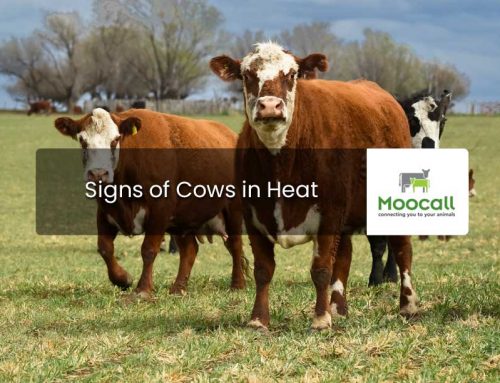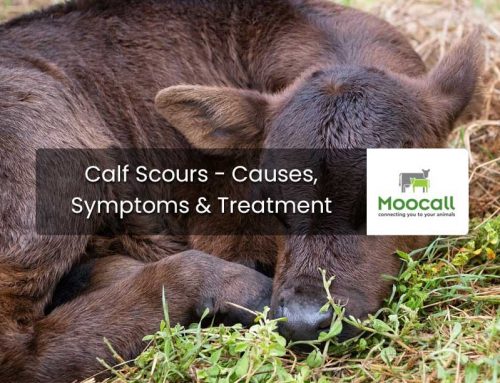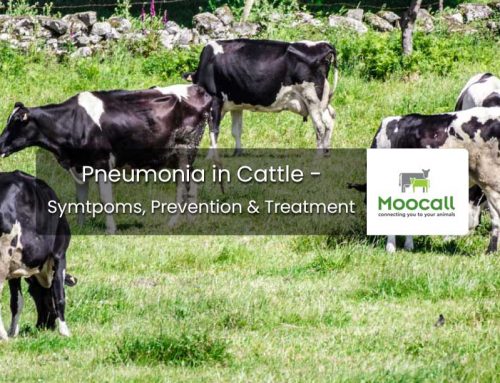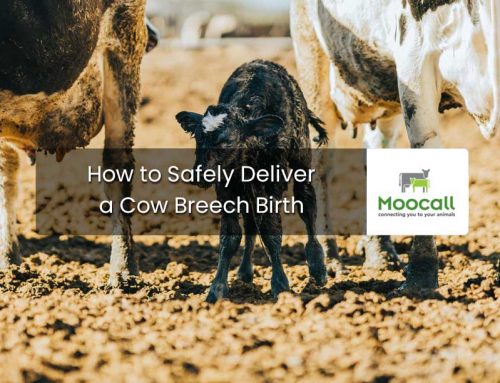Johnes disease is a chronic infection, which is usually fatal.
It is highly contagious in cattle, and it affects primarily the small intestine of ruminants.
Article Chapters
What is Johne’s Disease?

Image source: Hindawi
Johne’s disease leads to many herds getting infected as it is very contagious.
In fact, all ruminants are susceptible to this disease.
Johne’s disease unfortunately leads to the progressive damage of the intestines in affected animals.
Cattle that suffer from Johne’s disease unfortunately end up dying from it.
While different kinds of treatment for this infection have been attempted, there has unfortunately not been much success to date.
Causes of Johne’s Disease

Image source: NODPA
Johne’s disease is an infectious condition caused by what is commonly referred to as Map, namely, the Mycobacterium avium subspecies paratuberculosis.
As the name itself suggests, it is closely related to the organism which causes tuberculosis.
Johne’s disease generally enters a herd through healthy but infected animals.
Cattle are more susceptible to this infection during their first year of life.
Calves become infected by swallowing small amounts of infected manure.
When this occurs, the bacteria embeds itself in the ileum.
This is the wall of the lower part of the animal’s small intestine.
Infected tissues will try to regenerate healthy tissues.
This is an immune response that results in the thickening of the intestines.
As a result of this, nutrient absorption is reduced, and thus weight loss starts to take place.
The Map starts to grow and multiply in the cells of the animal’s immune system.
This is then excreted in feces, and some amounts will also be present in milk and saliva.
When the microbe is excreted, it will end up contaminating water and soil.
Outside the host animals, the organism will not manage to multiply at the same rapid rate.
But it can still survive for over a year in the environment as it is highly resistant to heat and cold.
Thus the primary cause of the spread of Johne’s disease is from contact with an infected animal’s feces or saliva.
In the case of calves, there could also be prenatal exposure.
This occurs if the mother is in the late stages of the disease.
Another source of infection is from the milk that comes from infected dams.
Symptoms of Johne’s Disease

Image source: Agridirect
In dairy herds the initial symptoms of this disease include a significant reduction in the milk yields.
This is often noted well before any other symptoms of the disease start to emerge.
Some cows may also show signs of infertility.
Moreover, symptoms could start after two or even three years after infection took place.
In the early stages the only way to confirm whether the animal is suffering from Johne’s disease is to carry out blood tests.
As the disease progresses, more symptoms will be noted including:
- Persistent, profuse diarrhea
- Soft swelling under the jaw (bottle jaw)
- Severe weight loss despite the fact that the animal may still have good appetite
- Loss of condition
- Infertility
Once such clinical signs are evident, the animal will not manage to recover and will unfortunately continue to deteriorate.
How is Johne’s Disease Spread?
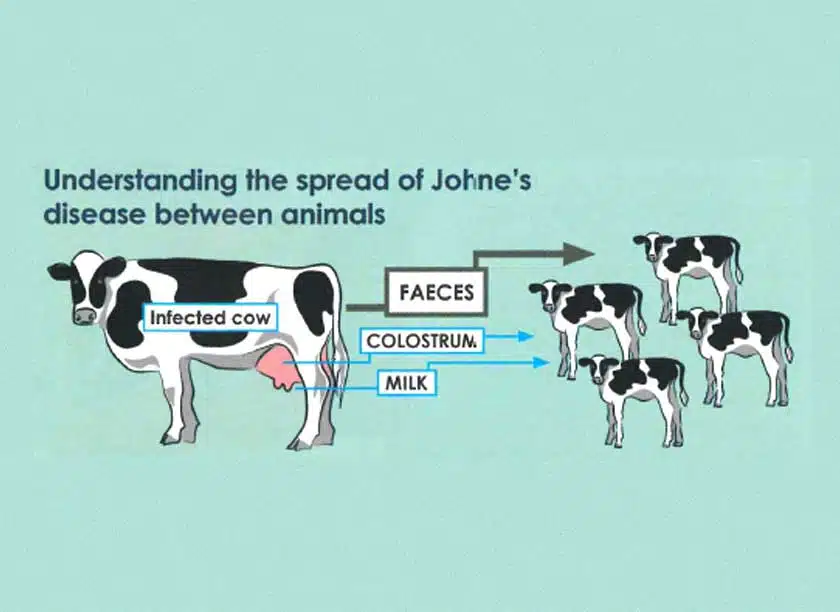
Image source: Molecare
Unless controlled effectively, Johne’s disease could spread quite easily, and it can lead to several negative consequences.
Infected cattle will be much more susceptible to other kinds of diseases.
This is mainly due to the fact that they will have considerable difficulty in maintaining their body condition, and also since their fertility will be poor.
Milk production will be negatively impacted.
Most cows will start to produce around 25% less milk than their potential yield.
Once signs such as diarrhoea and wasting become more evident, the milk yield will diminish even more.
Hence, over time the total milk yield from the herd will decrease significantly, and so will the income.
Preventing & Eradicating Johne’s Disease

Image source: Shutterstock
The control and prevention of Johne’s disease is understandably highly recommended.
Apart from leading to suffering and the eventual death of several cows, it also has a negative impact from a financial point of view.
Inevitably, production losses will be experienced if numerous cows are diagnosed with Johne’s disease.
Moreover, the value of the breeding stock would diminish.
The prevention of Johne’s disease is also important in order to reduce the level of Map in milk as well as from the environment.
The following are the main ways to prevent and control this disease:
Herd Screening
Since it takes a relatively long time for signs of Johne’s disease to appear in cattle that are infected, it is critical to screen the herd to check if there is any presence of Map.
Early detection thanks to herd screening can allow you to act in a more timely fashion as well as take the most suitable course of action.
Blood tests will need to be carried out in order to detect the disease in its early stages.
It will not be enough to carry out a microscopical examination of dung as the Map organism can take up to six months to be detected in this manner.
Moreover, infected cattle rarely pass detectable amounts of Map in their dung until they are over two years of age.
There is a blood test which is able to detect the antibody to Map that is produced by cattle infected with Johne’s disease.
Unfortunately though, cattle tend to produce this at later stages.
It is recommended to consult with a veterinary surgeon in order to develop a screening programme which can be ideal for your herd.
It is best to have a level of assurance for certification purposes especially to support sales.
In such cases a regular herd screening programme will be recommended.
This will generally include taking a blood test every one to two years on all adult herds, as well as carrying out tests on any animals or other culls that are suspected of being ill.
If on the other hand you do not believe that there are any of your herd infected but just want to ensure that early detection is possible, testing on suspected cases and periodic screening of part of the herd may suffice.
In cases where you are aware that Johne’s disease is present in your herd, your main goal is to try to eradicate it.
Hence a more intensive programme will be required.
This will need to be carried out in conjunction with other management tools.
Stocking
One of the major sources of infection is the purchase of infected dairy or other livestock.
These will not be showing any signs of Johne’s disease, but it may still be present.
As much as possible it is best to keep a closed herd.
If you really need to bring in replacements it is recommended that you try to obtain these from herds that have been undergoing regular testing.
You should check that there is no evidence that the infection has been found.
Thus, always make sure to ask what kinds of tests have been carried out, and when.
One of the safest ways to introduce new blood lines in your herd is by means of embryo transfer.
If you opt for this option make sure that the recipient animals are known to be free from Johne’s disease.
Clean Drinking Water
Johne’s disease can spread easily through contaminated watercourses.
Therefore it is of paramount importance to ensure that your cattle are being supplied with clean drinking water.
Wherever possible it is best to stick to water coming from the mains.
In case you have a private water source, make sure that you check it on a regular basis.
Any water troughs need to be kept as clean as possible.
It is also a good idea to install fences to avoid the cattle going to drink from ponds, streams or rivers.
This is even more important if such watercourses are slow moving as there will be stagnant water.
Pasture Management
Map is a very tough, persistent organism.
It can be found on pasture for around a year following the application of slurry or manure.
Even if the manure has been properly composted, there could still be Map present in it.
Hence it is best to avoid grazing young animals on such land as there could be chances of infection.
It is also worth noting that infection could be reintroduced to the herd through other animals, and this co-grazing should be avoided.
Protecting Calves
Calves can become infected in various ways, including:
- Fecal contamination of milk.
- Teats which are soiled in dung.
- Fecal soiling on the calf’s coat which it can swallow while grooming itself.
Thus proper hygienic practices need to be ensured to try to minimise the chances of calves being exposed to dung or slurry of adult animals.
The following are some good practices:
- Make sure to monitor calves provide them with clean well-bedded areas such as calving boxes that can be well cleaned and disinfected regularly.
- Checking that the dam’s teats are clean to prevent ingestion of fecal matter.
- Calves should be reared in a clean environment where there are no chances of adult fecal contamination.
- Avoid having calves grazing in the same pastures where adults graze, and where slurry was applied recently (ideally during the past year)
What To Do If Johne’s Disease Is Discovered

Image source: Pixabay
New Born Calves
Should Johne’s disease be found to be present in your herd, then it means that Map may be present in the milk that such infected cows provided.
It is commonly found in these cows’ colostrum, and so it is critical to ensure that measures are taken to minimise the chances of infection in calves.
Newborn calves are best removed from their dam soon after birth.
They should be taken to rear in a clean and well disinfected environment where there is no possibility of adult fecal contamination.
Newborn calves should receive a sufficient amount of colostrum.
Should it not be possible to provide this from their own mother, it is best to try to offer it from one animal which has repeatedly tested negative for Map.
Never pool colostrum from a herd to feed calves.
In cases when calves are allowed to remain with their dam, it is crucial to make sure that the teats are clean.
The pen needs to be cleaned regularly too.
Herd Management
The following are some actions which should be taken if Johne’ disease has been confirmed to be present in your herd.
- Remove animals which have tested positive from the herd as soon as possible.
- Since the offspring of infected females have a very high chance of being infected too, they will also need to be removed from the herd.
- Do not breed from offspring of infected animals.
- Avoid getting replacement stock as this may lead to more infected cases.
Herd Vaccination
You may wish to consult with your veterinary surgeon regarding the option of herd vaccination against Johne’s disease.
If you are considering this option, it is best to give it to calves who are still very young.
This will help to reduce the number of animals that develop Johne’s disease in its later and more serious stages.
Having said that, vaccination will not remove the infection if it is already present in the herd.
Thus, a herd vaccination programme is best carried out in conjunction with a well planned herd management programme for best results.
Is Johne’s Disease Harmful to Humans?
While Johne’s disease is very serious in cattle, there are no health implications for humans.
This disease is not zoonotic.
Conclusion
Apart from being aware of the seriousness of this disease, and the symptoms associated with it, it is critical to take the necessary steps to prevent it.
There should be specific plans in place for regular herd screening and other preventative measures that could greatly help in preventing this disease.
A clean environment, clean drinking water, and avoiding manure contamination are just some of the measures that should be taken.

